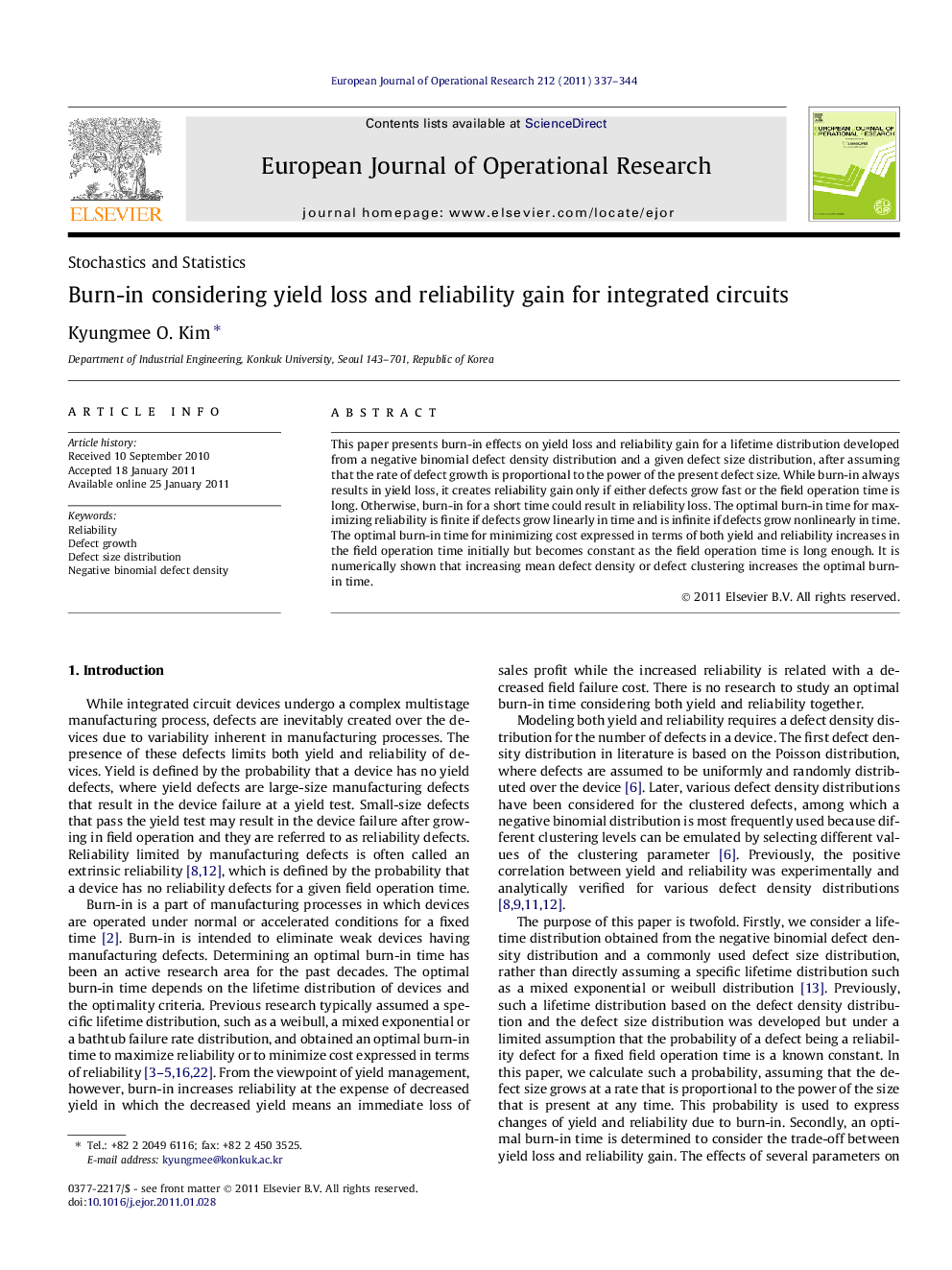| Article ID | Journal | Published Year | Pages | File Type |
|---|---|---|---|---|
| 477036 | European Journal of Operational Research | 2011 | 8 Pages |
This paper presents burn-in effects on yield loss and reliability gain for a lifetime distribution developed from a negative binomial defect density distribution and a given defect size distribution, after assuming that the rate of defect growth is proportional to the power of the present defect size. While burn-in always results in yield loss, it creates reliability gain only if either defects grow fast or the field operation time is long. Otherwise, burn-in for a short time could result in reliability loss. The optimal burn-in time for maximizing reliability is finite if defects grow linearly in time and is infinite if defects grow nonlinearly in time. The optimal burn-in time for minimizing cost expressed in terms of both yield and reliability increases in the field operation time initially but becomes constant as the field operation time is long enough. It is numerically shown that increasing mean defect density or defect clustering increases the optimal burn-in time.
